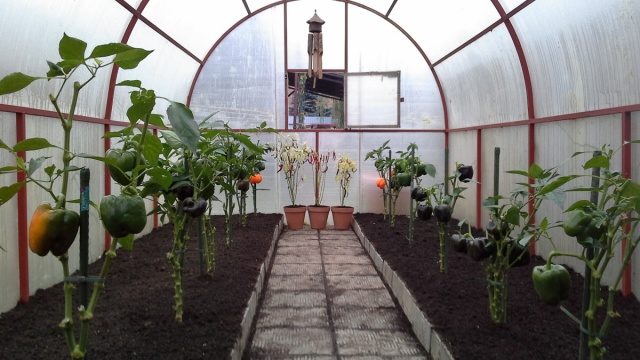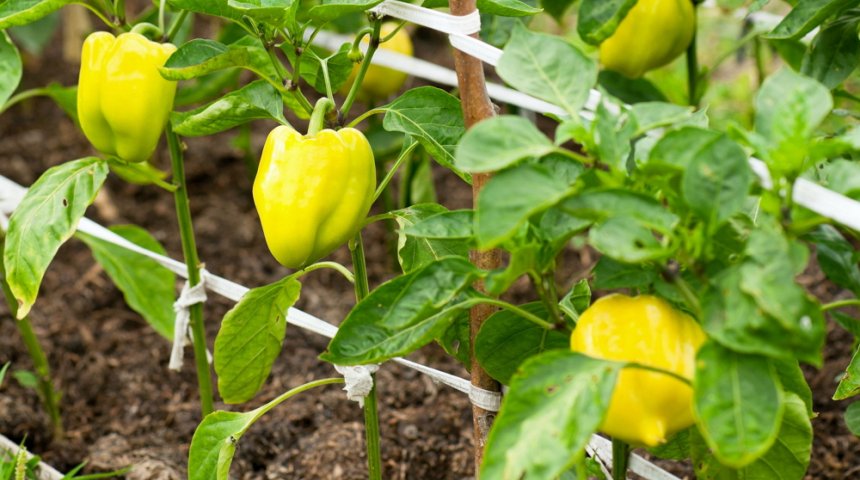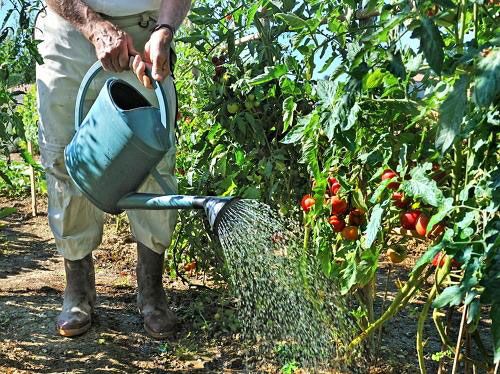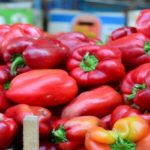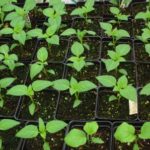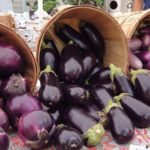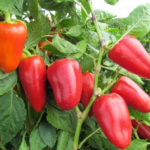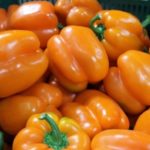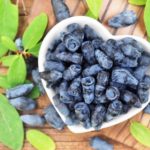Without this vegetable it is difficult to imagine both preparations and the garden. Since pepper loves heat and light, planting it is not possible in all conditions. This capricious crop, even in the south, will not produce a bountiful harvest without proper care, and in the Urals you may not see anything except leaves and flowers. Recently, breeders have been trying to develop varieties that are more resistant to cold, but growing peppers in open ground or even in a greenhouse will require a lot of effort and effort.
The best varieties for the Urals
One of the most popular types of pepper is bell pepper.Of course, this crop requires a lot of attention and care, but it is resistant to unfavorable conditions, such as cold and short summers.
The best bell pepper varieties must be characterized by high productivity, resistance to difficult conditions and must have excellent taste and commercial qualities.
Here are a few varieties and their inherent characteristics:
- Oda violet - this bush is erect, low-growing with a strong stem, the fruits of which are cuboid-shaped and purple in color. The average weight of one fruit is approximately 100 - 150 g, the average yield is about 6 kg per square meter. One of the main advantages of this pepper variety for the Urals is disease resistance.
- Feher. The fruits of this pepper are distinguished by their prism-shaped shape, juiciness, sweetness and yellowish color. The bush itself is a standard type, and its maximum height is 60 cm. However, the yield of this bush is lower than the previous variety - only 2.5-5.5 kg per square meter.
- Trapez has a huge yield (about 12 kg per square meter), the fruit of which weighs from 150 to 180 g. The advantage of this pepper is its long storage, as well as stable yield. The fruits are dark green, prism-shaped, with very juicy and tender pulp. This type of bush is semi-spreading, semi-determinate, approximately 80 cm high.
- Variety Nikita, no more than 70 cm high, is a standard-type bush, and the fruits are yellowish-red, with juicy and tasty pulp and cuboid in shape. This pepper is not large in size and weight (only about 70 g). However, it is universal in use.
- Triton is a fast-growing, branched plant up to 60 cm high. The fruits are bright red, very juicy and spindle-shaped.The advantage is ideal presentation and good yield (approximately 9.5 to 10.5 kg per square meter).
- The fruits of Interventa are red with strong, aromatic and sweet pulp, heart-shaped and prism-shaped. The weight of such a fruit is approximately 225 g, and the yield is from 8 to 10 kg per square meter. The bush is branched, vigorous and semi-spreading. The advantages are great productivity and wonderful taste.
- Medal is a tall, compact and well-leafed bush, the fruits of which are sweet, red and wide prism-shaped. The weight of the fruits reaches only 60 g, and the yield is relatively small - about 7 kg. However, this variety is resistant, despite the Novosibirsk climate, to strong temperature changes.
- The last variety that can be planted in the Urals is Zarya. This is one of the very early varieties of pepper of excellent quality. The fruits are a beautiful creamy yellow or red color. The weight of one pepper is from 280 to 300 g, and the yield is up to one ton per hundred square meters. The plant is medium-sized and spreading.
Choosing the right site for planting
The main rule when choosing a site for planting peppers is the more sun, the better. It is important that during the day it is exposed to the sun and does not fall into a shady shelter.
The next point is that it grows in loose soil rich in nutrients. However, there is no need to fertilize it too much with droppings or fresh mullein, as well as with various microelements and preparations.
The landing site should be protected from drafts and strong gusts of wind. They also grow better in moderately watered soil and do not like excess moisture.
Don't forget about crop rotation.The basic rules are simple: the best predecessors are beans, cabbage, peas and cucumbers; the best neighbors are tomatoes, as they repel aphids from this delicate plant. The smell of bush beans is also effective in this regard; it will repel any pests that try to interfere with the growth of the pepper. On the north side, corn is traditionally planted to protect the vegetable plant from cold winds.
Preparing the bed
For further proper development of seedlings, it is necessary to choose the time when moving to the street. Gardeners are often concerned about the question of when to plant planting material. This time comes when frosts pass, and falls in the month of May in the south, and in Siberia in mid-June.
There are some secrets that contribute to the good growth of seedlings and a bountiful harvest. Usually the bed is prepared in advance and in several stages. Closer to autumn, you should dig up the soil, putting a little fertilizer with phosphorus, nitrogen and potassium in the ground. With the onset of spring and warming, every square meter needs to be treated with ammonium nitrate. To avoid diseases, a couple of days before transplanting the sprouts, it is recommended to water the soil with the following solution: dilute one spoon of copper sulfate in a bucket of water.
Peppers cross-pollinate too well to plant different varieties side by side. To obtain pure varieties, it is better to select different corners at a distance from each other. If this is not possible due to the meager size of the garden, you can make a screen of plants higher. The aforementioned corn or beans are suitable for this.
And most importantly, never plant sweet pepper varieties near bitter ones, otherwise the entire harvest will be bitter.
When the age of the seedlings reaches about 55-60 days after sowing, planting in open ground is possible, taking into account two weeks for germination. This happens around the end of May, when the air temperature at night does not drop below +14-16 degrees. In turn, this means that the seeds should be sown closer to mid-March, and for greenhouse conditions, the seeds should be sown in mid-February.
Transplantation into open soil
Cloudy weather is chosen for this important step. It’s even better to start planting peppers in the morning or late afternoon, when planting peppers is not exposed to direct scorching rays of the sun. To avoid damaging the root of the bore, you should water the soil in the cups so that it falls out in one lump. Since the leaves are very delicate, it is also worth keeping an eye on them during the entire process. The 40*40 cm scheme is considered the most optimal for planting and caring for pepper seedlings in the Urals. It is recommended to make the depth of the hole slightly larger than the height of the container and fill it with two liters of warm water.
The seedlings are installed vertically, the roots are covered with earth, and the leaves are tied to a peg.
Next comes the construction of a greenhouse made of film. The number of layers depends on the degree of cold characteristic of the area. The appearance of new leaves will be a good sign that the borer has begun to grow and become stronger. However, in the Urals you should not relax, summer there is full of surprises, and a film with covering material should always be at hand.
Appropriate care
Further care of seedlings in the Urals consists of the following steps:
- systematic watering in the absence of extreme heat (every two days);
- loosening the soil (5-7 times during the season);
- fertilizing plants 2-3 times per season;
- weeding.
All efforts regarding the care of grown bell peppers should be aimed at creating the most comfortable conditions for the development of this fastidious plant. These are common procedures for garden crops, which are quite enough for a good harvest. For an extremely bountiful harvest, there are a few more secrets:
- moistening the earth, except for the last half month;
- luring bees using saucers with syrup, or by spraying leaves with it;
- proper formation of the bush, which prevents the development of unnecessary shoots;
- removing excess sprouts every 10 days;
- mandatory watering of the beds after fertilizing.
A huge mistake is sowing ahead of schedule, as a result of which the seedlings outgrow and flowering and even peppercorns appear on them. This is fraught with long-term diseases and delays in plant development. If everything is done correctly and on time, growth is noticeable within a week.
Forming pepper bushes
Formation is very important when growing medium-sized and tall pepper plants, because the harvest itself will depend on this. After cutting off a few leaves on the trunk of the plant, approximately 3 side shoots will sprout. From these, two strong shoots should be selected, which will be the skeleton of the plant, and weak shoots should be pinched onto one leaf.
After the shoots begin to branch, you need to choose the strongest shoot, and it will be the main shoot. Weaker shoots should be pinched behind the first leaf, leaving one fruit.
Moreover, every couple of days it is necessary to cut off the leaves, side shoots and fruitless shoots that are located below the branching of the main stem.It is extremely important to carefully tie each branch of medium- and tall-growing plants, because they are fragile and break easily.
Although growing peppers entails many difficulties, the results are worth it. After all, today there are many dishes that use pepper, which will add variety to your table. It can be used fresh, canned or frozen. Grow peppers using this technology and get an excellent harvest.



